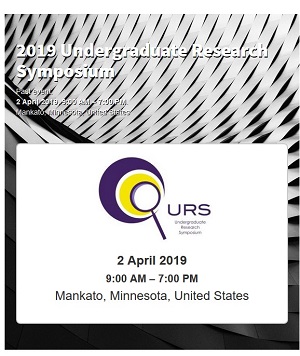The Effectiveness of Tootling in an Elementary Special Education Classroom
Location
CSU Ballroom
Start Date
2-4-2019 2:00 PM
End Date
2-4-2019 3:30 PM
Student's Major
Psychology
Student's College
Social and Behavioral Sciences
Mentor's Name
Alexandra Panahon
Mentor's Department
Special Education
Mentor's College
Education
Second Mentor's Name
Carlos Panahon
Second Mentor's Department
Psychology
Second Mentor's College
Social and Behavioral Sciences
Description
Many teachers struggle to manage students' classroom behavior (Lum, Tingstrom, Dufrene, Radley, & Lynne, 2017). Students and teachers tend to focus on disruptive behavior, which can lead to ignoring prosocial classroom behavior. Tootling is a class-wide intervention that helps students and teachers focus on prosocial behaviors rather than disruptive behaviors. Tootling is the opposite of tattling: instead of a student reporting on peer disruptive behaviors, students report on peer prosocial behaviors (e.g., a student sharing with another student). During the tootling intervention, students set a goal of how many tootles are needed to earn a class wide reinforcement (e.g., a pizza party). Researchers have found that tootling was effective in decreasing disruptive behaviors and increasing prosocial behaviors in the general education classroom (Cihak, Kirk & Boon, 2009). This project will be conducted in a middle school special education classroom and will use an ABAB withdrawal design with follow up. Students' disruptive and prosocial behaviors will be measured. After data collection, a social validity scale will be given to the teacher regarding the perceived ease of intervention implementation. At a two-week follow-up, maintenance data on disruptive and prosocial behaviors will be collected to investigate the durability of the effects of tootling. Preliminary results and implications of the findings will be discussed. We predict that implementing tootling in the special education classroom will result in an increase in students' prosocial behaviors and a decrease in disruptive behaviors.
The Effectiveness of Tootling in an Elementary Special Education Classroom
CSU Ballroom
Many teachers struggle to manage students' classroom behavior (Lum, Tingstrom, Dufrene, Radley, & Lynne, 2017). Students and teachers tend to focus on disruptive behavior, which can lead to ignoring prosocial classroom behavior. Tootling is a class-wide intervention that helps students and teachers focus on prosocial behaviors rather than disruptive behaviors. Tootling is the opposite of tattling: instead of a student reporting on peer disruptive behaviors, students report on peer prosocial behaviors (e.g., a student sharing with another student). During the tootling intervention, students set a goal of how many tootles are needed to earn a class wide reinforcement (e.g., a pizza party). Researchers have found that tootling was effective in decreasing disruptive behaviors and increasing prosocial behaviors in the general education classroom (Cihak, Kirk & Boon, 2009). This project will be conducted in a middle school special education classroom and will use an ABAB withdrawal design with follow up. Students' disruptive and prosocial behaviors will be measured. After data collection, a social validity scale will be given to the teacher regarding the perceived ease of intervention implementation. At a two-week follow-up, maintenance data on disruptive and prosocial behaviors will be collected to investigate the durability of the effects of tootling. Preliminary results and implications of the findings will be discussed. We predict that implementing tootling in the special education classroom will result in an increase in students' prosocial behaviors and a decrease in disruptive behaviors.
Recommended Citation
McCorkell, Brennah and Mia Hansen. "The Effectiveness of Tootling in an Elementary Special Education Classroom." Undergraduate Research Symposium, Mankato, MN, April 2, 2019.
https://cornerstone.lib.mnsu.edu/urs/2019/poster-session-B/17



